Gwen Whiting: Founder of The Fill
Episode 574
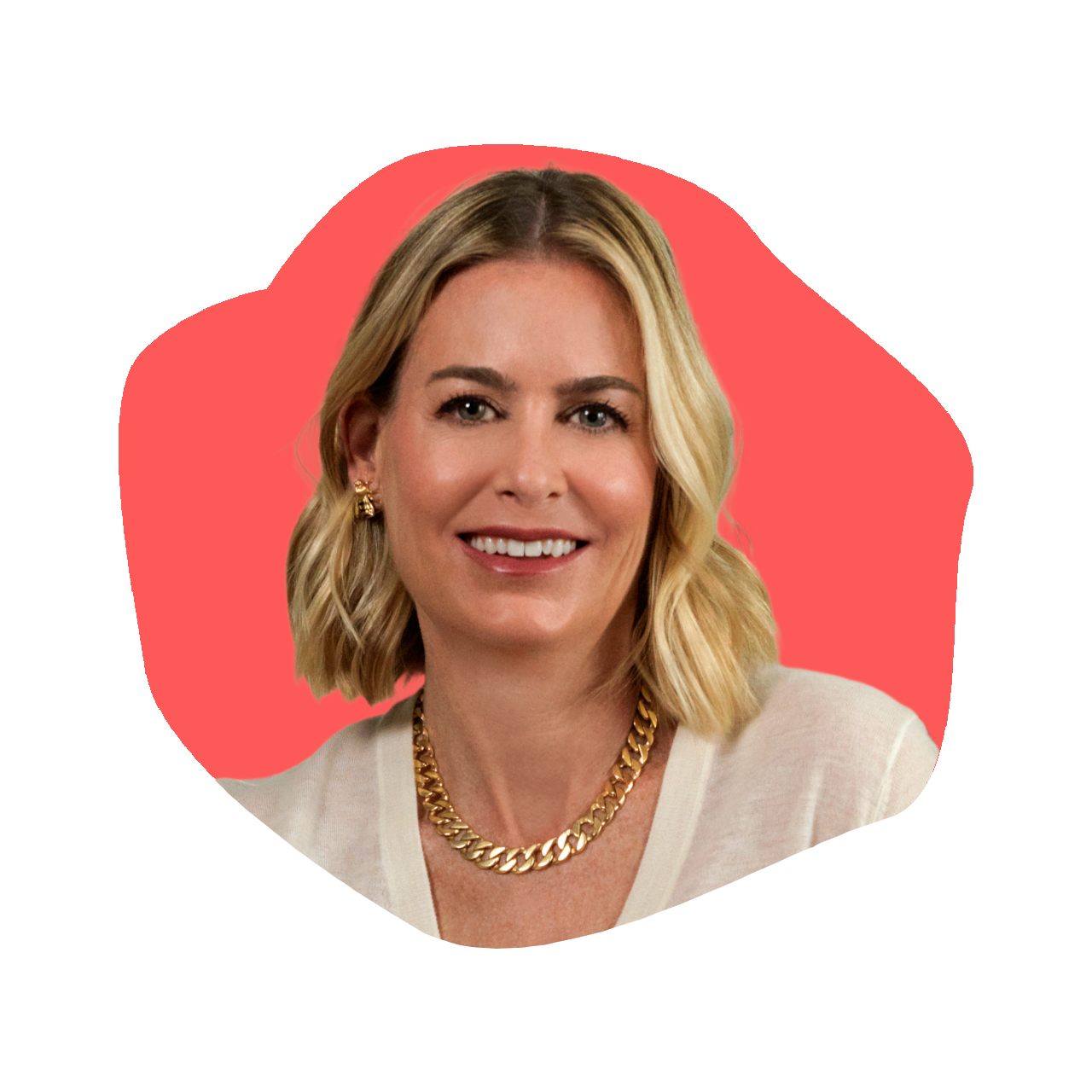
On this episode of The Kara Goldin Show, we are delighted to host Gwen Whiting, the innovative founder of The Fill. After her remarkable journey with The Laundress, which she built into a global brand, Gwen has now launched The Fill, a unique members-only cleaning community that intertwines luxury with sustainability. Gwen discusses her transition back into entrepreneurship, the inspiration behind The Fill’s business model, and her commitment to maintaining high standards for wellness and environmental care. Gwen delves into the challenges of redefining a sector she originally helped shape, emphasizing the importance of integrity, innovation, and community in building a successful brand. She shares insights on creating a business prioritizing customer experience through functional aromatherapy and why she chose a membership model to foster closer customer relationships. Listen in to discover how Gwen Whiting is once again pushing the boundaries of the cleaning industry, making it both a luxurious and sustainable part of our daily lives.
Resources from
this episode:
Enjoying this episode of #TheKaraGoldinShow? Let Kara know by clicking on the links below and sending her a quick shout-out on social!
Follow Kara on LinkedIn – Instagram – X – Facebook – TikTok – YouTube – Threads
Have a question for Kara about one of our episodes? Reach out to Kara directly at [email protected]
To learn more about Gwen Whiting and The Fill:
https://www.linkedin.com/in/gwenlwhiting/
https://www.instagram.com/gwenlwhiting/
https://www.instagram.com/thefillclub/
https://www.gwenwhiting.com/
Transcript
Kara Goldin 0:00
I am unwilling to give up that I will start over from scratch as many times as it takes to get where I want to be. I want to be you. Just want to make sure you will get knocked down. But just make sure you don’t get knocked out, knocked out. So your only choice should be go focus on what you can control. Control. Hi everyone, and welcome to the Kara Goldin show. Join me each week for inspiring conversations with some of the world’s greatest leaders. We’ll talk with founders, entrepreneurs, CEOs and really, some of the most interesting people of our time. Can’t wait to get started. Let’s go. Let’s go. Hi everyone, and welcome back to the Kara Goldin show. I am so excited for our next guest. I’ve been wanting to meet her for some time. I have definitely tried her original products that she had created. We’ll talk about that, but today we’re going to get more into her newest product. She is a serial entrepreneur. Her name is Gwen Whiting, and she is the founder of a company called The Fill and you may know about some other products that she created, called The Laundress, and it’s a globally recognized brand. Gwen just grew it and grew it and grew it just incredible, incredible vision and execution, and did such a wonderful job. Sold that company, and now she has launched The Fill just recently, in June 2024 and she’s here to talk about her entrepreneurial journey, but also about this incredible idea that she has decided to launch in the field that is not just about incredible products, but also about how she is taking a mission driven idea into a business that is, is just incredible. So let’s dive in. Welcome, Gwen,
Gwen Whiting 2:05
thank you, Kara. I’m so happy to be here.
Kara Goldin 2:07
Super, super excited to have you here. So as I mentioned, you’re a serial entrepreneur, and before we discuss the newest venture called The Fill, can you tell us about The Laundress. And sort of, when did you start it? And kind of, why did you start this company?
Gwen Whiting 2:26
Sure, I’m actually not that thrilled to be called a serial entrepreneur.
Kara Goldin 2:30
It’s, it is a good cereal. Seems like, yeah. I think there’s too many crime podcasts out there that maybe cereal like, brings like, Oh no, but it’s a good thing. It’s definitely a positive one.
Gwen Whiting 2:43
I don’t know. I was pretty happy with my one and done, which brought us to where we are today. So I started The Laundress in 2002 I launched in 2004 it was the never ending startup. It was over, over 15 years of an unfunded, bootstrapped journey. So it was literally the Forever startup, until Unilever came knocking on our door. Literally they walked into my store on Prince Street in New York City wanting to see if we’d sell to them. I guess I should have known from that that someone walking to my store for acquisition discussion wasn’t really the best start of a relationship, but it was a 20 year journey, start to finish of of laundry and The Laundress. Wow,
Kara Goldin 3:44
that’s, that’s incredible. And how many SKUs did you have when you actually sold? I mean, you started with a lot? Yeah,
Gwen Whiting 3:51
it was a full lifestyle. I mean, we could do everything from the liquid products, from all laundry and fabric here to home cleaning to storage and closet and organization and travel. I mean, it was really a full, full life lifestyle brand which doesn’t exist anymore.
Kara Goldin 4:11
So did you, I mean, what was your background? How did you first? Because that was your first startup. So how did you get this idea and this focus on cleaning, because you’ve decided to do this to some extent again, like, what has like, why that industry? I mean, what did you notice that really needed fixing? So
Gwen Whiting 4:34
I was in apparel design by background. I studied at Cornell. I studied textile science and design. And I sort of created a minor for myself in entrepreneurship, kind of wanting to lay the seeds of business ownership. And it was very simple. I had this degree in knowledge of textiles. I. And there and learned about their properties, and then I started my career at Ralph Lauren. I was a designer, and all the tags in the clothes basically said dry clean or dry clean only. And I knew from my background that that wasn’t the case, and they could really be laundered and should be, should be washed, should not be dry cleaned for their best performance and longevity and but there was nothing in the US marketplace to do that. I mean, it was tied wool light, and the dry cleaner was the full sort of fabric hair landscape at the time. So I had this idea. I told my Ralph Lauren boss about it one day driving around in a town car in New York City, and he said, Gwen, it sounds just like The Laundress. And he was my number one champion from the beginning, that I really had some legs here to pursue. So I contacted a PhD professor at Cornell, and she was never my teacher, but she I knew somehow that she had a PhD and her specialty was in detergency. And so I reached out, and I said, Hey, you know, Would you be open to meeting with me and hearing what my idea is? And she continued to be a advisor and mentor as well in developing what became The Laundress.
Kara Goldin 6:29
Wow, that’s That’s amazing. So what are the things for people who are not familiar with like laundry, you said you came from the apparel side, and some of the bigger brands that are out there that people use, what? What’s sort of the difference, right? I mean, yeah,
Gwen Whiting 6:46
so at the time, this is 2004 and everything was sold at the grocery store. It was in a giant container. It was enormous. It was in this, like HDPE, you know, non recyclable gallons of thing. It was usually colored something like orange and blue, whether it was tied or all or whisk or any of those brands. And they were number one formulated with 80% water. And so that was a huge waste, ecologically to buy that much water. So you were dosing with about eight ounces. My product was one ounce. I cut out all the water and concentrated it back when I launched in 2004 I didn’t color my product, so I put all my product in clear container so you could actually see what was inside. The norm was the complete industry. Norm was using petrochemicals. So petroleum derived surfactants. In my learnings and studying with the Cornell professor, we learned that the best ingredients actually were plant based, but no one used them because they were most expensive. And I wasn’t formulating a product to sit price competitively in the grocery store. I was my goal was to create this premium, best use product I use the principles of creating a luxury brand and luxury products, when I was creating my products, which obviously includes using the best raw materials, so I came out of the gate using these wonderful enzymes that were super effective and all nature derived, and for using plant based surfactants instead of petroleum. So that was the early days of of the category. And then, you know, dry cleaning had went through a number of regulations of perk and disposal and other environmental sort of cleanups along the way, but it was a pretty dirty industry for a long time.
Kara Goldin 9:02
So you’ve taken a few years off since selling the company to Unilever, and you have decided to jump back in, into entrepreneurship again, launching The Fill. And so what prompted you to say, I got to get back in there. And
Gwen Whiting 9:24
yes, well, Kara, honestly, I’m doing very begrudgingly. I was very pleased with what I created. I thought I, you know, I know that I created the best products, and I really changed the industry. You know, I created this category as niche cleaning as there is another way to clean outside that grocery aisle. And you know, I was, I was happy I had done it. I sent my baby off to thrive somewhere else. And. Unfortunately, that’s not what happened. My brand is is not record. The Laundress is not recognizable anymore. It doesn’t have all those wonderful s that I created and point of sale, and it’s just gone. So aside from my, you know, my legacy down the drain. I also lost my products down the drain as well. So I certainly wasn’t going to go back to buying tide or wool late or dry cleaning after 25 years. So here I am back in the laundry room.
Kara Goldin 10:37
That’s That’s crazy. So what is The Fill above and beyond? We’ll get into sort of the I love your membership based model that you’ve launched, too. But what are you trying to do with this launch in the laundry industry, and it’s expanded beyond laundry. It’s not just laundry. You’ve cleaning. You’re doing a lot more than that. Yes.
Gwen Whiting 11:02
So you know I, while I am begrudgingly cleaning again, I do and I it is a luxury to go back and recreate the category 20 years plus years later, and what it means to me now, what I want now, versus what I did then. And there’s always room for improvement in in materials and packaging and sustainability to you know, to push the boundaries with as well. So what am I doing? I created another collection, a new collection of laundry fabric here and home cleaning, but this time, The Fill is really centered on wellness. At the heart of it with The Laundress, I created a cohesive fragrance experience. I used fine fragrance that was loads of fun and very innovative and pushing the boundaries of what your cleaning products should smell like. Now, with The Fill, I’ve censored it around aromatherapy and making your products work even harder for you, you’re cleaning anyways, you’re doing the work. You’re making the effort, you might as well get more, even more added personal benefit from that experience, and that can happen with using like these beautiful bread blends of aroma therapy with your cleaning products.
Kara Goldin 12:36
And so what is the aroma therapy that you’re using in most of the products.
Gwen Whiting 12:41
So I have a few different blends that are, you know, created for purposely for the product. So I have my home cleaning all in one scent that’s very invigorating and clearing and and then I have a different scent that I’m using for my wool wash that’s more grounding and warming, and then I’m doing a detergent for day and a detergent for night, so one’s more uplifting and then one’s more calming and restorative. So I’m really playing with the blends appropriately with the use and time that you’re using it.
Kara Goldin 13:25
That’s so, so interesting. So you’ve gone from like a traditional business model to more of the membership based approach. Can you explain the membership based approach and how it works?
Well, we’ll
we can get into why. But I love can you explain, like, what is the consumer gonna see when they go to the site?
Gwen Whiting 13:44
So when you go to a site, to my site, The Fill club, you get to a members paywall. So it is a membership paywall. You can’t get into the site to shop because it is a private members so you have to join. Similarly to, you know, being a prime member, or maybe a Costco member, you have a membership. I have two different categories of membership. One has free shipping and one has flat right shipping. But my goal of creating a private members club is that I really wanted to bring my cleaning community back together, and so this is the space for people who really want to be there and really challenging the business model that this can be done. I don’t want to build a giant CPG brand. I already did it. I don’t want to sell on Amazon. I don’t want to be on Tiktok. I don’t want to do any of these things. I did them all before. That was great. It was wonderful to have a giant global brand, but that’s not what I want with The Fill. I want this very tailored community of people who just want beautiful product. Want to shop in peace. Want to live in peace. So wander and want clean and peace and have this wonderful internal experience I gave away, you know, cleaning tips and videos and how to to everybody for all those years before now, this, my content is only for people on the inside, so you can only speak to me or see what I’m writing, or get my personal cleaning concierge directly as a member. That’s
Kara Goldin 15:30
so interesting. So it’s not a matter of like you’re getting it every month. It’s not
Gwen Whiting 15:35
like a lot of people are used to thinking subscription, and it’s not a subscription, it’s purely a membership. You can buy whatever you like, whenever you want. You just have to be within the membership. Got
Kara Goldin 15:51
it. And so how many s did you decide to launch with? And how did you make that choice? I mean, I think that that’s the thing. When you’re launching for a second time, right? You sort of know what works, and you know what sells, and you have all of that data. But you know, when you’re a first time operator, you’ve got to try all these different things. So I’m so right and fail, and you know, different scents and skews and etc, but what, like, what did you end up deciding to launch with?
Gwen Whiting 16:27
I launched with 16 of my must haves, my favorite children, 16 of them.
Kara Goldin 16:36
That’s incredible. Which one is like, the your favorite? Oh,
Gwen Whiting 16:40
that’s, I can’t really answer that I have, you know, this my stain remover I just can’t live without. So that was the first item that I needed in my back, in my laundry room.
Kara Goldin 16:55
That’s incredible. So when you think about The Fill evolving over, you know, the next five years, you’re probably going to get lots of phone calls from people that are, you know, challenging your your idea of keeping it small, you know, how do you, how do you balance The growth ambitions with trying to make sure that your vision is kept right, and that you stay small and quality, and this is what you want to do. Because I think that’s always this challenge, right?
Gwen Whiting 17:33
It is it is it is challenging. And it’s already challenging for people who are like, I want to carry out my store, and I’m like, I can’t. It’s only for membership, and it’s the most exclusive, inclusive community anyone can join. But I, you know, it’s really shifting an idea of success and a personal idea of success. I know a lot of people have, you know, an assumption of what success looks like. That obviously shifts for many people, sometimes in our business, in our world, you know, people think it has to do with how much money you raised. Is a metric of success, which will come back to bite them in the end. We’ll have that conversation later. But, you know, these are other assumptions and ideas of what success is. And I really, for me, for The Fill, for success is making beautiful product that people love, having it sustainable and profitable enough to, you know, to keep it, you know, in the right place and at the right size that I want, but just really providing that joy and product to those in the club. Yeah,
Kara Goldin 18:51
definitely. So what are the most common misconceptions about, like, you know, in this category, about sustainable products? Because I think that there’s a lot of words clean and sustainable, organic, there’s a lot that’s thrown out out there. But in your industry, what? What do you see as a term that is confusing?
Gwen Whiting 19:17
It’s, gosh, how do I answer that? I there’s different levels. I mean, there’s all sorts of different ways to skin the cat. There’s different levels of efficacy. So my interest is creating the most effective naturally derived product. I believe in textile longevity. I believe in, you know, home longevity. This is like the antithesis to fast fashion. So I formulate with the, you know, the what’s best for the customer, what’s best for the for the result, and for the results of Pres. Textile preservation or home cleaning. You kind of have, now that we all have lived through the pandemic, you know, we have, we understand that there’s like a whole other arm of disinfectants, and, you know, hospital grade and other things that are necessary in a time and place, but not for everyday use. And then there’s another sort of lower on the scale is much more like soap and water base formula. So there’s a scale and, you know, and there’s room for, you know, other, you know, for everyone, I guess, of but I, you know, I stick true to my longevity preservation best, best results lane.
Kara Goldin 20:46
So I think obviously what’s inside the bottle has to work. But How important do you think packaging is, given that you’ve now successfully launched The Fill, but also before that, had a ton of experience, and you had such beautiful, very clean packaging. But how important is packaging for the consumer?
Gwen Whiting 21:11
I don’t know how it is mentally for the consumer, but as a as an innovator and a producer in this space, I was felt very strong about pushing the norm. So I can’t, you know, I came out with a product in a clear bottle that was concentrated before that was that there was no norm. I created that as a norm, that you could sell these small products that were clear and recyclable and I, you know, I had a very beautiful esthetic. And so changing the conversation of what a CPG brand should look like, I didn’t think it needed to look like this, like ugly, dumb, dumb grocery thing. It should be beautiful. It’s in your home, you know, it’s like my products came to a top of shelf display, instead of like hidden underneath a cabinet, which is where most products lived. Previous to mine, I still spot things in magazines and photo shoots. But then one of the last things I did with Unilever was I felt really strongly about changing everything to 100% PCR, which is post consumer, recycled plastic, and you can buy, you can produce in different scales. And I was very committed to 100% PCR. I felt that was the right direction. I had the voice and the space to do it. I created this luxurious looking, you know, premium brand, and I should be using my authority to push the boundaries, and I actually got pushed back on that. I Everything was PCR when I left, and I don’t think anything is PCR since then, huh? Interesting, yeah, and for this huge organization who you know, toots their horn out about being so sustainable, they walk back my sustainability goals. So,
Kara Goldin 23:16
Wow, crazy, crazy. And is and why would they do that? Like, do you think for costs is that people
Gwen Whiting 23:23
have no because Kara, it’s hard to run a business. It is hard to be the founder, and you have to have conviction and strength and stick by your sentiments and your feelings and your gut and know what you’re doing and have the audacity to do it, which I did, but a corporation with no leadership that took over my brand didn’t have the conviction that I did. Period, end of story, no,
Kara Goldin 23:50
totally and but in when they start making decisions, I feel like it’s based on price, right? It’s, it’s like that wasn’t
Gwen Whiting 23:59
even, well, from what I left that that shouldn’t have been the case. Yeah, you guys
Kara Goldin 24:04
have high margins. It’s just, yeah, it’s,
Gwen Whiting 24:07
it’s the that’s, you know, it’s the balls to do it, yeah, yeah, no, exactly,
Kara Goldin 24:14
yeah. Well,
I,
I mean, it’s funny, like, I think this is, this is where you’re going with this too. That I’ve always said, I have plenty of friends who are marketers and inside of companies, and you always see when a new marketer comes in, they always, they’re not, they’re never going to go with the existing marketing, even though the marketing was great, right? Like they’re, they’re not going to go with it because they want to put their mark on something. Yes, and I have
Gwen Whiting 24:44
a term for that, which is not as friendly, but it’s like, lift your leg over the hydrant. I mean, the designers are, like, all the designers do it too. So, like, every logo gets read, you know? So like YSL, the logo keeps getting changed. You know? It’s like with every. Or Gucci now as a new division that they’re getting changed, and it’s it to me that’s so sad, because that’s the classic ness of a luxury brand, especially a designer. I mean, I for sure you want to change the marketing for like Poland, spring, whatever, but like to be the actual house of a designer, you know, under your legacy name, to make a change, it seems so silly to me, but
Kara Goldin 25:24
yeah, they want to be able to put their mark on it and hopefully say that it created more sales or or whatever it is. But I think that that’s the case too. When companies buy products that I think that there doesn’t necessarily need to be a real reason why they’re doing it. They’re doing it because they want to put their own mark on it. Right? And it’s just, it’s, I totally hear you. It’s crazy.
Gwen Whiting 25:51
So then fast forward with The Fill. Is the next iteration of challenging, or steer, not saying challenging, but steering a consumer into a new direction, a new orientation. And so with The Fill I created, everything in bulk, flex pack. So the quantities are about one to 2x of what of previous product that I made was so it’s meant to be refillable, and I’m selling either a glass or a plastic refillable bottle, if they choose to buy that to use as their refill receptacle. So then you would just be reordering your bulk pack to can’t it or use it as is right out of the packaging. I mean, certain products you can’t you need, like a spray bottle for A surface cleaner. Yeah, you need to buy a sprayer. But the idea is you get one sprayer. But packaging is not perfect, as you know it is packaging. So flex pack has its downfalls in its recyclability. However, your carbon footprint and your energy footprint is so much drastically reduced from using that packaging. So it’s never a win. What’s also not a win is our US recycling statistics either. So even though it is recyclable. The amount that actually gets recycled is rather depressing. So it’s a losing game, but it’s to me, it’s you do the best you can do to reduce your footprint in every way, shape or form. And with The Fill, I am pushing the customer into this other orientation of, at least, you know, reducing the amount of using User packaging that you’re that you need, and having fun with it. Yeah,
Kara Goldin 27:53
no, it’s, it’s great. So when you think about lessons along the way, things that you know you tell your younger self about, about, you know, building a brand, like, what are the things that you really need to focus on in order to get this product off the ground and and make something happen? Because, obviously, even if you want to keep it small. You want it to be successful, right?
Gwen Whiting 28:24
Absolutely. And my goal for success is, well, you know, I need to keep it small and intimate. Is finding as many customers that I service for all those years that have been left high and dry. So I am looking to to bring as many people back together with my offering, because, you know, I had 20 years of users and and laundress lovers, and that got left high and dry after all these years. So that’s really why I’m doing this, you know, yeah, of course, I need my stain remover, but I’m also doing this to satisfy this, you know, I created this space, I solved all these problems for all those years, and made this product that had this, you know, gave people an ease of mental load, knowing that they didn’t have to worry about the stains that their kids were getting or that they were spilling, or dinner parties on napkins or whatever it was reduced dry cleaning, whatever, you know, whatever, whatever that there were so many reasons why people loved what I did, but to leave that community out wasn’t, didn’t feel right for me. So, yeah, definitely.
Kara Goldin 29:38
So when you think about lessons? Would you say, you know, making sure that you’re launching something that you know has profitability immediately, like, what? What do you think off the top of your head? Would you say, Yeah,
Gwen Whiting 29:52
I mean, I do a lot of mentoring and speaking with potential startups or founders, and. There’s just so much misinformation about startup and raising money and needing money, and I think the I’m hoping that the idea of raising money and throwing spaghetti at the wall with it is coming to a close. Money’s not cheap anymore. That was not effective. Buying customers on Instagram is over all of these things that were you could do when you had free money and less manipulated. Social media was a time and a place, but that’s not now. But yeah, nobody really understands what the alternative is. So, yes, I’m coming at the market with an advantage of of a reputation and the community I built for 20 years of users. So that’s not the norm. However, I really think that people should be going after their businesses from a, you know, a small bit like everyone’s become a startup entrepreneur. We’re really talking about small business ownership. Some people make it big so and but the rest of everybody else is really running a small business, which requires being profitable and making profitable decisions, staying in your lane. I was raised in a household with a small business owner. You know, my dad had a neighborhood store and sold electronics and did repair and he raised a wonderful family with his small business. But that’s a real thing, staying in your lane, not overspending, spending purposefully, really thinking about what you’re gonna what your returns are, keeping your your customers at the key, at the heart, that’s who you’re servicing, not a investor or someone else that isn’t that person, and they have a different interest than you do. And if you’re and you’re making a product, you’re doing a consumer goods, your customer is who you’re servicing. Like this is real. Whether you’re in there, you’re making something that they’re cleaning their home with, or that they’re wearing or that they’re ingesting or putting on their body. Like these are real things that’s very serious. It’s a big responsibility. Yeah,
Kara Goldin 32:22
no, definitely. Well, I am so excited for The Fill and thank you for creating this incredible company. It’s so nice to see you back as well. So very, very exciting. Gwen, so really, really thrilled. So all the info will be in the show notes, but everyone needs to try The Fill for sure. And like Gwen was saying, the membership, she wants you to sign up, but it’s not a mandatory subscription to another product either, so you could buy whatever you want. And they’re really, really incredible products. So thank you, Gwen, so much for doing all of this and coming on and sharing and best of luck with everything.
Gwen Whiting 33:03
Thank you so much.
Kara Goldin 33:05
Thanks again for listening to the Kara Goldin show. If you would please give us a review and feel free to share this podcast with others who would benefit. And of course, feel free to subscribe so you don’t miss a single episode of our podcast. Just a reminder that I can be found on all platforms at Kara Goldin, I would love to hear from you too. So feel free to DM me, and if you want to hear more about my journey, I hope you will have a listen or pick up a copy of my Wall Street Journal, best selling book, undaunted, where I share more about my journey, including founding and building hint we are here every Monday, Wednesday and Friday. Thanks for listening, and goodbye for now. You.
People Also Liked
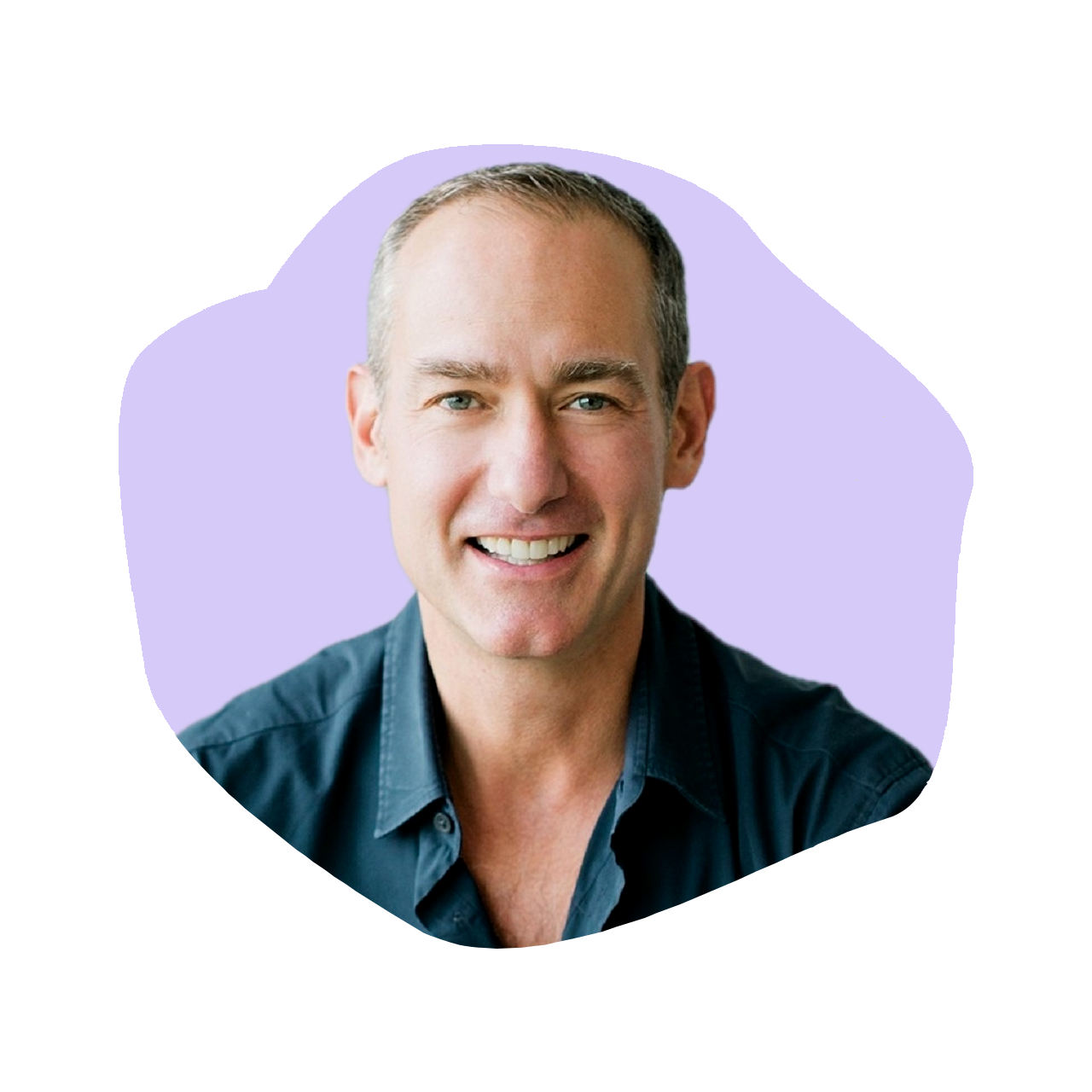
752
Mark Rampolla: Author of An Entrepreneur’s Guide to Freedom and Founder of ZICO
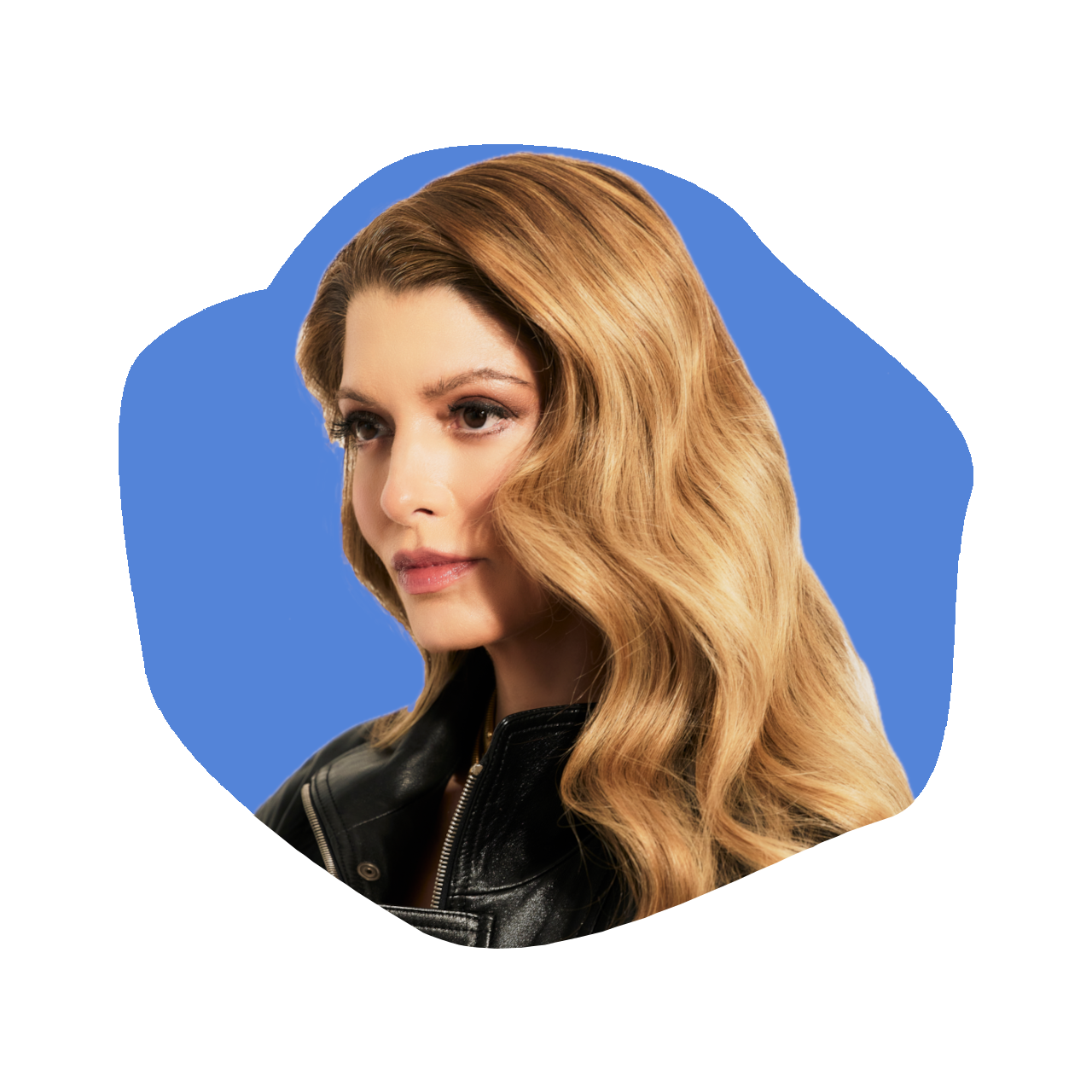
751
Deborah Pagani: Founder of Deborah Pagani Beauty
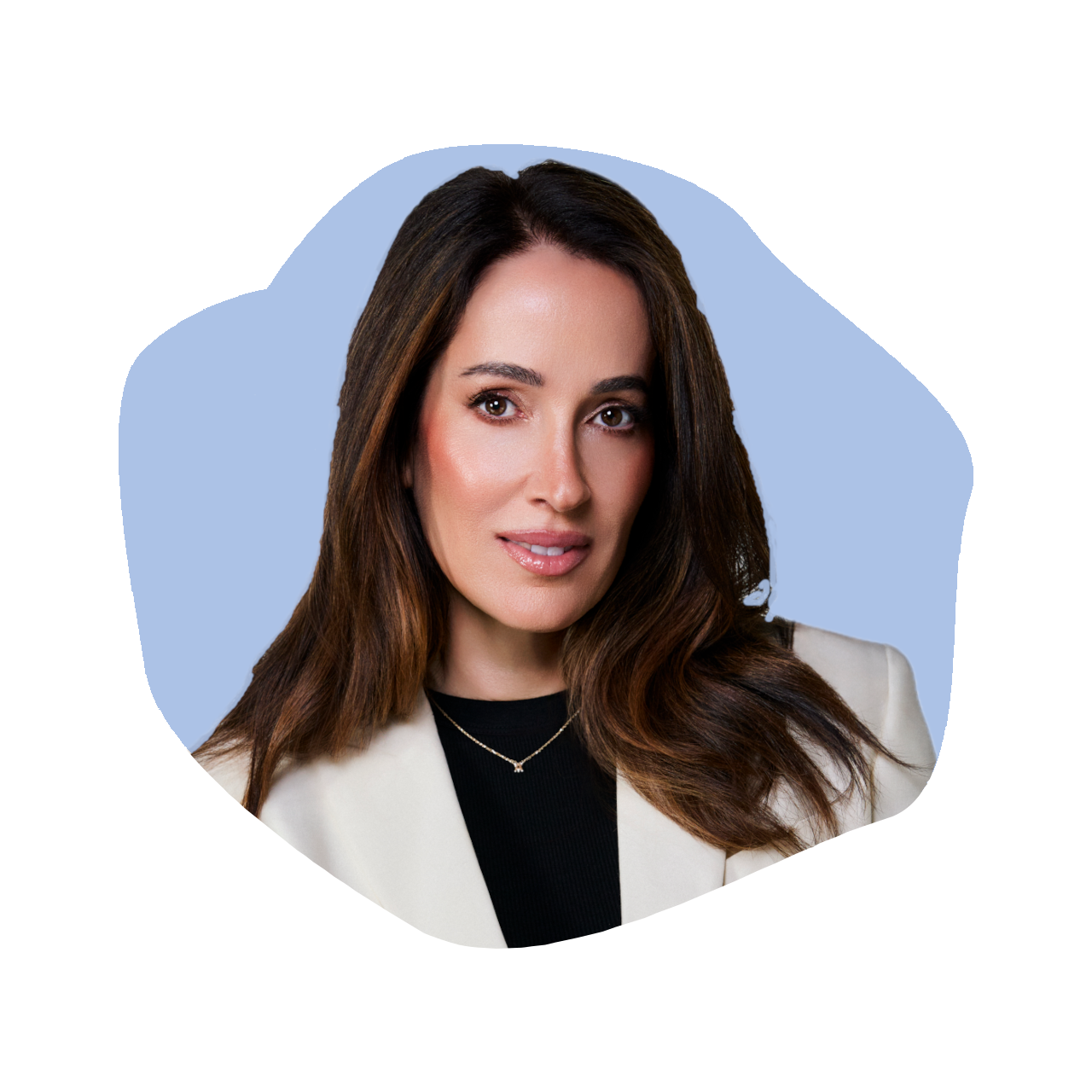
750
Angela Caglia: Founder & CEO of Angela Caglia Skincare
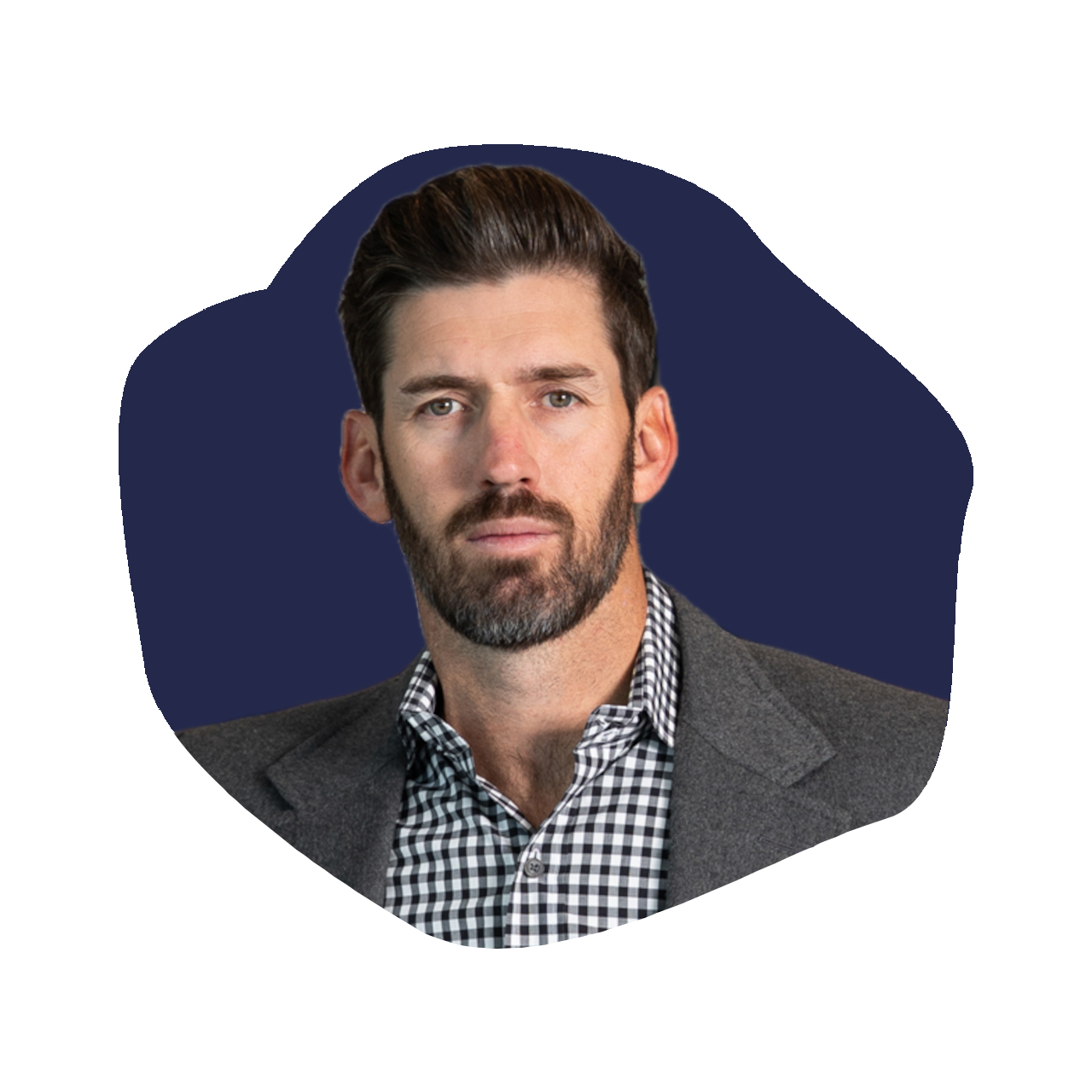
749
Doss Cunningham: Chairman & CEO of Nutrabolt

748
Cheree Ashley: Founder & CEO of Osier




